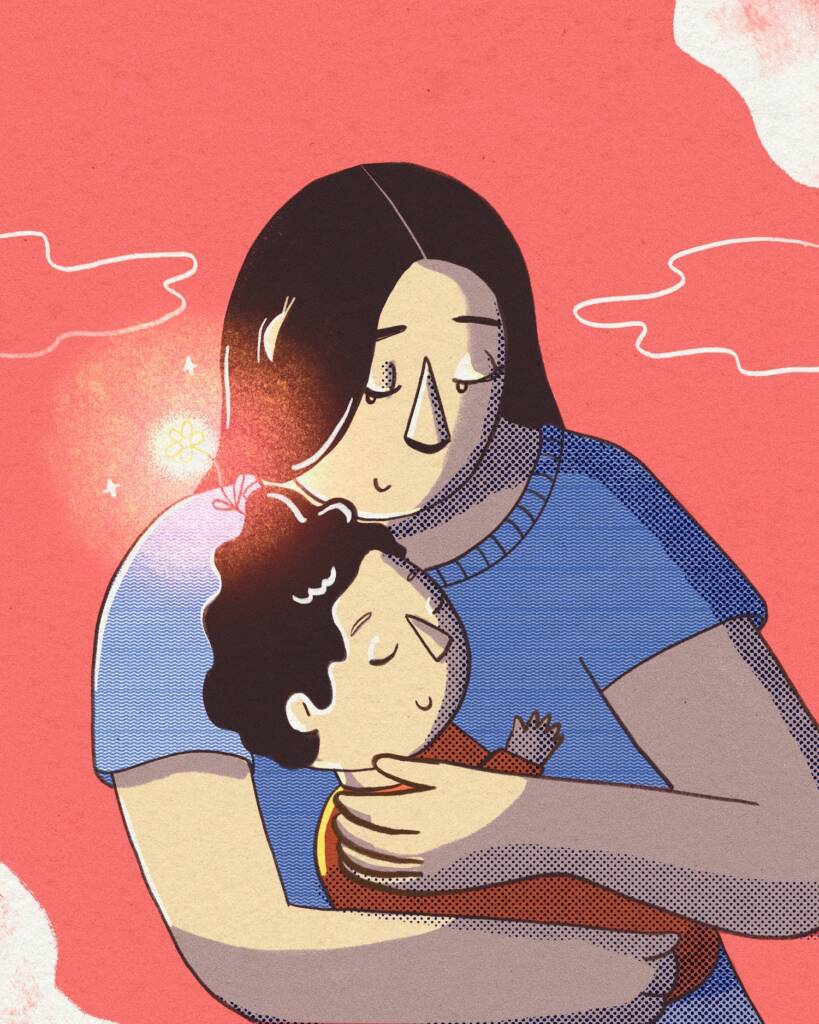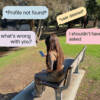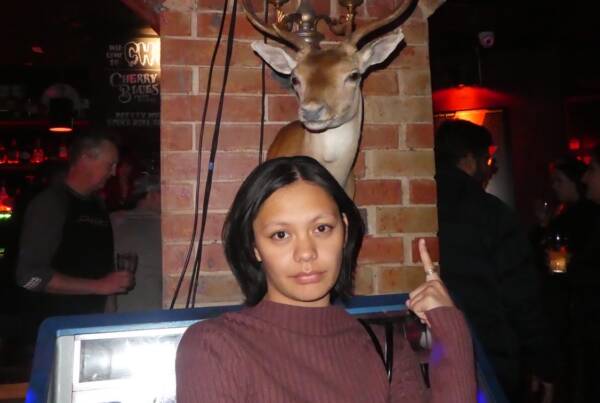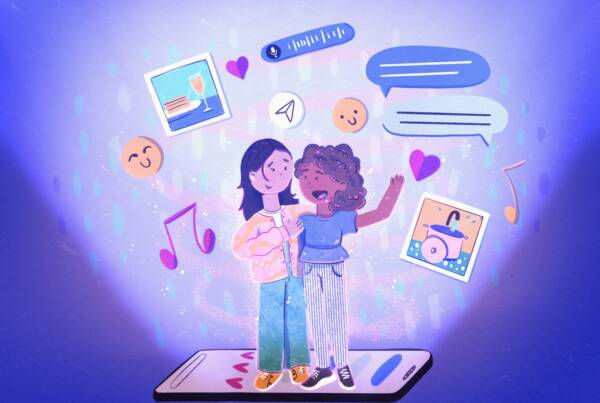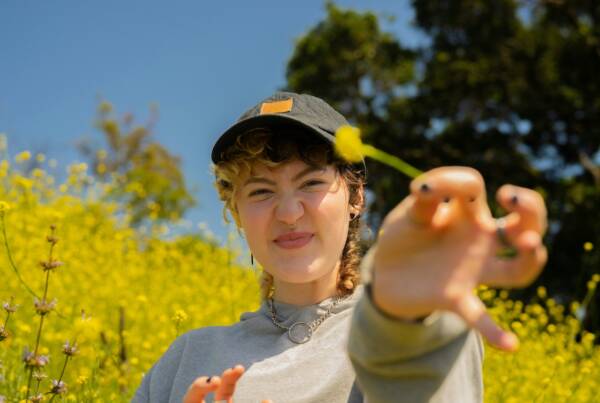Writing by Cait Speldewinde // illustration by Nea Valdivia
CW: violence, gendered violence.
Gender is a curious thing, woven into culture, influencing lives, language and discourse. As I write this, gendered narratives intertwined in my life are playing out. Next to me sits a silver frying pan on my stove, droplets of condensation dancing across the glass lid and cascading down. Inside are juicy green apples, a large dab of butter and more cinnamon than most people would enjoy. These stewed apples will be a delicious treat for my 11-month-old son Alfie when he wakes from his nap. Another crucial part of the role of ‘mum’ I took up last year; the cook, the carer, the emotional labourer. These are the predetermined, and societally essential roles built for women that Alfie is already learning about and benefitting from; roles that contrast distinctively with those for men. The metaphor of the forbidden fruit is not lost on me as I explore this tale of gender and parenting that I believe contributes to cyclical gendered violence perpetrated across the world.
Alfie was born on a warm February day, so eager to meet his doting mum and dad that he almost arrived on the floor of the hospital car park. Birthing him was a defining moment and the strongest I have felt in my life. He is a spirited child with a curious and wild temperament, fascinated with exploring the world around him. He is not typically boyish and is often mistaken for a girl. He is sweet, kind and shy, but loud when he feels secure.
When I was only a few months pregnant, I found out I was carrying a baby with one X and one Y chromosome; a boy he would be, probably, I thought. My view of gender defines it as a culturally constructed phenomenon, not something we can be assigned at birth or related to our body or genetics. I will support Alfie to decide his own gender identity if he feels I’ve made the wrong choice, and until then, I’ll present him with as much diversity as I can.
I believe such that diversity may be key to shift us away from a culture of violence entangling masculinity in Australia. One woman is murdered in Australia each week, usually by a man, and most often by a man she knew. Men are also victims of violence, yes, but they are almost always perpetrators, and their behaviour is often of extreme consequence, changing or ending lives. Whilst we are aware of the endemic loss of life, the fight to end it is stalled. Many people are pushing for change, but change is happening too slowly to save lives. Are we lacking adequate solutions and resources? Maybe. Arguably, solutions and resources might be available, but those in power are failing to grasp them, and are therefore failing us.
When I opened the tiny, white envelope my obstetrician handed me, and read “it’s a boy! :)”, I knew immediately that I needed to raise a ‘good’ boy. This boy would become a man who would never harm another person, who was kind, caring and focused on contributing positively to his community and his family. Where on earth would I start? Given gendered violence is still perpetrated at an alarming rate, I felt that pre-birth was the time to begin my journey to grow a person who would not be a violent man. I could not remain utterly outraged by men’s violence and avoid my responsibility to parent this child with a lens that protects women. But I also know I’m not his only teacher.
Sadly, in Australia, we have lived through years of ambiguous silence or worse, veiled reinforcement of men’s violence from our leaders. The Morrison Government in its last term provided safe haven for multiple powerful men who allegedly perpetrated sexual violence. We hear reports of men coercing and assaulting women in the halls of Parliament House. These issues reach the top tiers of our country’s leadership. With figureheads allowing women’s rights to be continually trampled, are we surprised when men across the country believe they may take what they want from women – including our lives?
Mainstream media paints a weekly picture of the ‘good’ man pushed too far, lost touch with his commonly held identity or faced disruptions to his mental health. Women are remembered for their kindness, their mothering, and the wholesome roles they played in the lives of others. Overall, it’s a shocking, sad, romanticised story of pain; a thorny, tangled Romeo and Juliet tale. The narrative is changing, especially outside of mainstream journalism, but the statistics remain the same – we’re still in danger.
So, is masculinity itself to blame? There remains a virulent platform for misogynist extremism masquerading as ‘men’s rights’, continuing to slither into the minds of young people.
This bigoted diatribe extends harm to people of colour, people with disabilities, First Nations people, migrants and refugees, the LGBTQIA+ community and men whose own diverse masculinities don’t fit in.
Men in Australia are tough, strong and stoic. They don’t need to be in touch with their emotions because they have none. Or maybe they’re larrikins; hilarious, especially to captivated audiences like their mates or children who don’t need to rely on them to be any better than fun jokers, as secondary parents.
Perhaps these are oversimplified stereotypes. Is it feasible we shouldn’t blame men for these identities? After all, they are often modelling their fathers or living with trauma from violence in their own childhoods. Either way, these remain the predominant role models young boys see growing up.
Men are often the working parents, at work from two weeks post-birth. Men are less present, and less likely to be presented to children in caring and nurturing roles early in life. Men usually do much less when it comes to caring. Perhaps being an average secondary parent is a better brand of masculinity than the authoritarianfathers of generations past, or perhaps it is just another type of misogyny.
Most of the time, it’s women who are the primary carers. Women are early childhood educators, teachers, and babysitters. Women are cooks, cleaners and maternal and child health nurses.
Women aren’t just our carers, our daughters, sisters, or mothers. Whilst women carry out the majority of paid (low-paid) and unpaid care labour, women are more; we are people. We are people. Should I say it again? We are people, with agency, human rights, interests, bodies, minds and lives. We don’t exist only in relation to men. We aren’t for men; we are for ourselves. And while it sounds like a political argument, it isn’t meant to be – it’s just the facts scrawled here to remind us that we exist, simply for ourselves.
I knew Alfie needed to learn these lessons from the very beginning, to enable his understanding of the gendered nature of the world he will grow up in. Every day of his life, I make conscious choices to demonstrate these points. In dressing Alfie, in the toys I choose to have in our home, the language I use with him, in teaching him about the agency he has over his body and the consent he may or may not choose to provide when interacting with others.
I am also aware of the need for unconditional love and critically, secure attachment that will support Alfie to form healthy future relationships whilst understanding and managing complex emotions throughout his life. The first 1000 days post-conception lay the foundations for a life well lived, and are formative in our development of self, our understanding of others and how we relate. In these early days, one significant challenge we heterosexual, coupled parents face is how children see us relating to our partners.
How Alfie sees me (Mummy) behaving, what he sees me doing or not doing in our home and likewise, what he sees my partner (Daddy) doing or not doing is critical to building his view of gender roles.
We are likely his most important role models, so we have a considerable responsibility to demonstrate healthy masculinities, femininities and gender equity and equality.
Still, Alfie will see inequities in our home, where, even as gender-attuned parents, we still fall into patterns of dividing labour. Every day I ask myself; am I doing enough to show my child that his mum is a person, with rights and hopes, who is not destined only to provide for him?
I’m certain that few parents want their children to harm others, but do parents understand the influence they may have over their children making such choices later in life? I hope I can do enough to ensure Alfie does not capitulate to a culture of violence.
I hope that he chooses respect in interactions and relationships. I hope that if enough of us focus on teaching, loving and guiding boys to be better men, rather than concentrating only on teaching girls to be safe and attempting to protect women from men’s violence, we might just stop gendered violence and grow boys into accountable men. But is hope enough?

